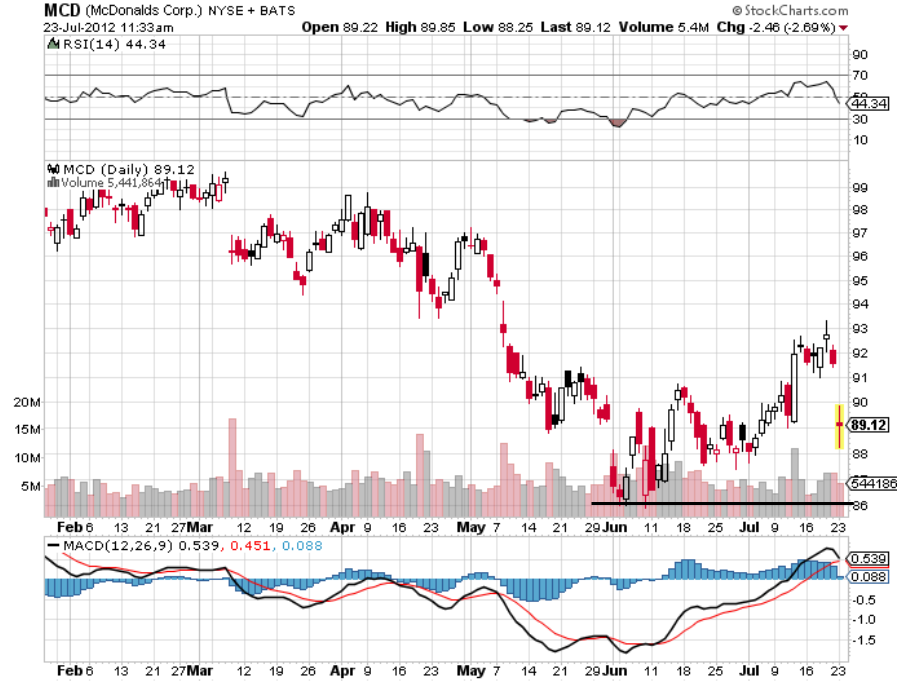By: Tejas Dessai
Advancements in artificial intelligence and robotics could revolutionize the industrial sector, leading to a significant increase in the use of automation. Automation will transform production lines, likely elevating human workers to manage robots, boosting overall productivity and output. Capital investments spurred by government policies and corporate mandates favoring reshoring of manufacturing is set to play a major role in enabling this shift. As automation permeates industrial processes, it could reshape operations, enhance productivity, and likely redefine the role of human workers in the industry, having a profound impact on the global economy and society.
This piece is part of a series that dives deeper into this year’s iteration of our flagship research piece, Charting Disruption.

Key Takeaways
- The global industrial robotics market appears poised for secular growth, bolstered by increasing demand for precision goods and advancements in generative AI, as well as rising labor costs.
- Adoption of automation will likely transform production lines, elevate human labor to more sophisticated, non-menial tasks, and boost productivity for the manufacturing sector.
- We believe industrial automation will multiply the opportunity for data center providers, niche software providers, and cloud computing companies.
Industrial Automation at an Inflection Point
The global industrial robotics market, totaling today an installed base of 3.9 million, appears poised for a surge, with projected annual spending growing from $18.2 billion in 2023 to $41 billion by 2030.1,2 This growth is expected to be fueled by a relentless shift from manual to automated operations, driven by the rising demand for precision goods, tightly coupled supply chains, compressed lead times, and stringent purity standards. As a result, automation systems are becoming increasingly indispensable in modern industrial processes.
From software to hardware, automation systems are increasingly becoming sophisticated too.
When it comes to software, we’ve seen adoption of advanced software solutions and artificial intelligence in previously weakly digitized sectors like manufacturing gains footing. Total spending on industrial and manufacturing software applications is expected to top $27 billion by 2024, growing over 50% from 2019 levels.3
In hardware, the integration of sophisticated sensors, such as computer vision and tactile feedback systems, has not only enhanced the speed and accuracy of industrial robots but has also contributed to safer and more adaptable automation solutions in diverse manufacturing environments. As a result, the industrial IoT market is projected to top $141 billion by 2028, growing at a CAGR of 13% during the period, driven by increasing data collection needs.4 Furthermore, significant strides in industrial robotics hardware have been made to augment dexterity, allowing robots to manipulate objects with increased finesse and versatility. The incorporation of advanced grippers, articulated arms, and haptic feedback systems has notably improved the robots’ ability to handle intricate tasks, fostering a new era of agile and dexterous automation in industrial settings.
Another key driver propelling the downstream adoption of smart machines is the steady rise in labor costs. Average manufacturing wages in the U.S. are projected to surpass $39 per hour by 2027, marking an increase of 56% from 2014 levels.5 The labor market continues to remain exceptionally tight this year as well. As of October 2023, the unemployment rate in the United States stood at a mere 3.5%, underscoring the scarcity of skilled workers.6
Automation Delivers Efficiency and Productivity
The growing adoption of automation will likely revolutionize production lines, elevating human labor to more sophisticated, non-menial tasks. Instead of performing repetitive tasks with their hands, we expect the average production worker to probably oversee and manage a fleet of automated robots and systems, fostering overall productivity gains and minimizing production errors. Studies have shown that a one percent increase in robot density, measured by the ratio of robots per human worker, corresponds to a 0.8% surge in productivity.7
Growing productivity in upstream processes, be in the production or handling of goods and services, should result in better unit economics downstream, further allowing businesses to remain efficient. This can be particularly powerful in the capital constrained environment of today, which we believe will play a strong role in motivating further investments towards automation.
Lastly, the advent of generative AI systems is further enhancing the efficacy of smart machines. Generative AI delivers cutting-edge, yet agile large-language model-based artificial intelligence systems that can be rapidly deployed across various applications. These models are continuously evolving in intelligence, while the associated training and deployment costs are steadily decreasing.8 As localized automation systems gain access to these advanced models, their decision-making capabilities should receive a significant boost, enabling handling of more complex tasks.
Automation Fosters a Broader Ecosystem
Automation requires a functional processing system in place, with actuators to perform tasks, processors to compute scenarios at lightning-fast speeds, and a broad set of sensing and detection apparatus to be able to capture data and signals and relay them back to the system’s core. We believe that increased use of automation will directly lead to an increase in consumption of a range of adjacent equipment.
For example, the use of internet of things-based sensing apparatus, that can not only capture data in real time, but also send them back to a centralized system for processing, could see a positive spike. This will likely cause demand for wireless chips, low power processors, and localized storage solutions to scale with adoption.
Furthermore, the proliferation of automation will likely unveil vast opportunities for data centers to accommodate the burgeoning processing and data storage capacity. At the same time, automation software, cloud computing solutions, data infrastructure, and other industrial automation-oriented software applications could also witness a surge in demand from industrial customers.
Conclusion: Industrial Automation Presents a Secular Opportunity
Range of factors, including generous government incentives, sweeping mandates fostering reshoring of manufacturing, surging demand for precision goods, and an overarching digital transformation shift, is paving the way for increased use of automation systems and smart machines within the industrial landscape. As automation permeates industrial processes, we believe it will transform production lines, elevate human labor, and redefine the future of manufacturing. Heightened use of automation will also help drive consumption of data center resources, cloud computing software, and other digital infrastructure solutions needed to enable the capture, processing, and management of data and systems.
This post first appeared on December 22nd 2023, GlobalX Blog
PHOTO CREDIT : https://www.shutterstock.com/g/Andrey+Suslov
Via SHUTTERSTOCK
Footnotes:
1. Fortune Business Insights. (2023, November 2). The global industrial robots market size was valued at $16.78 billion in 2022 & is projected to grow from $18.19 billion in 2023 to $41.02 billion by 2030.
2. IFR, (2023, September 26), World Robotics Report 2023.
3. Modern Materials Handling. (2020, February 5). Industrial software applications spend to top $27 billion in 2024.
4. 360 Research Reports. (2023, October 13). Industrial IOT Market – Growth, Trends and Forecast (2023 – 2030)
5. U.S. Bureau of Labor Statistics. (2023, August 30). Databases, Tables, & Calculators by Subject.
6. FRED Economic Data. (2023, October). Unemployment Rate, Monthly.
7. International Trade Administration. (2020, December). Robots and the Economy: The Role of Automation in Productivity Growth.
8. AEIdeas. (2022, March 23). Chart of the Day: Declining AI Training Costs.


